Occupational Safety Training in Electric Kettle Manufacturing
99,000 ₫
Note: The above price is calculated for one person, and the price may fluctuate depending on the number of trainees participating in the course and market movements. For more accurate pricing support, please refer to the quotation table or contact our consulting staff directly.
Occupational safety is an important issue in electric kettle manufacturing factories and needs to be addressed promptly to ensure the health and safety of workers, while enhancing the reputation of businesses. The Occupational safety training course is one of the effective solutions to raise awareness of accident prevention for workers participating in electric kettle manufacturing.
Table of Contents
Toggle1. Overview of Electric Kettles
a. What is an electric kettle?
An electric kettle (also called a rapid-boil kettle) is a device used to quickly and conveniently boil water.
It usually has a capacity of 1–2 liters, is made from materials such as stainless steel or hard plastic, and features automatic shut-off when the water reaches boiling point. Electric kettles can be used for various purposes such as making tea, coffee, cooking noodles, preparing soups, removing makeup, taking hot baths, etc.

b. Machinery used in electric kettle manufacturing
The machinery involved in the manufacturing and assembly of electric kettles includes:
- Metal cutting machines: Used to cut metal into components required for electric kettles.
- Metal bending machines: Used to bend and shape metal parts for electric kettle components.
- Metal stamping machines: Used to press metal into necessary parts for electric kettles.
- Welding machines: Used to weld metal parts together to form the frame of the electric kettle.
- Plastic cutting machines: Used to cut plastic parts required for electric kettles.
- Plastic molding machines: Used to mold and assemble plastic components for the kettle parts.
- Electronic circuit processing machines: Used to manufacture and assemble electronic circuit components of electric kettles.
- Quality inspection machines: Used to check the quality and safety of electric kettles before they are released to the market.

c. Electric kettle manufacturers in Vietnam
Here are some well-known electric kettle brands worldwide and in Vietnam:
- Zojirushi: A Japanese brand famous for high-quality electric kettles, offering a variety of designs and features. Zojirushi products are widely used in cafes, restaurants, and households globally.
- Philips: A Dutch brand specializing in home appliances, including electric kettles. Philips products are stylish, convenient, multifunctional, and popular in homes and offices worldwide.
- Tefal: A French brand known for kitchenware and cooking appliances. Tefal also manufactures electric kettles with smart, safe, and user-friendly designs to meet consumer needs.
- Panasonic: A renowned Japanese brand producing electronics, home appliances, and digital products. Panasonic’s electric kettles are appreciated for their attractive design, high quality, and various features.
- Kangaroo: A Vietnamese brand established in 1992. Kangaroo is a leading brand in Vietnam for manufacturing and distributing home appliances, including electric kettles. Kangaroo products are known for good quality, reasonable prices, and popularity in the domestic market.

d. Specific roles in an electric kettle factory
Group 1
- Executive director, deputy executive director, department heads in the electric kettle factory.
Group 2
- Safety officers: Manage safety within the factory, design safety procedures, supervise and enforce staff compliance with safe working processes.
Group 3
- Component manufacturing: Components such as kettle body, base, tubes, control units, indicator lights, buttons, water pipes, coils, electronic circuits, filters, etc., are manufactured on different manufacturing lines.
- Assembly: Once all components are ready, assembly staff connect components according to procedures, installing buttons, indicator lights, electronic circuits, filters, water pipes, etc., to form a complete electric kettle.
- Quality inspection: After assembly, electric kettles undergo testing, measurements, performance checks, lifespan, and electrical safety inspections to ensure compliance with national quality and safety standards.
- Packing and dispatch: After passing quality checks, kettles are packaged and ready for shipment to stores, supermarkets, distributors, or directly to customers.
- Maintenance and repair: Maintenance staff check and service kettles after sale to ensure long-term, safe operation.
Group 4
- Office work, service, sales, marketing.
- Manufacturing management, quality management, human resources management, materials management, finance, and accounting.
- Product design: Engineers and design staff create detailed technical drawings of electric kettles in preparation for manufacturing.

2. Overview of occupational safety training for electric kettle manufacturing
In this article, we focus on issues concerning Group 3, as they are directly involved in the manufacturing process and face the highest occupational safety risks. For more information on other groups, see here.
a. What is Group 3 occupational safety training?
- Group 3 occupational safety training consists of sessions that raise awareness about how workers can prevent workplace accidents.
- The training helps workers identify and avoid hazards, reducing the risk of workplace accidents during work.
REGISTER FOR OCCUPATIONAL SAFETY TRAINING SERVICE
b. Training duration
Initial occupational safety training
- Total training time is at least 24 hours, including testing time.
- 8 hours of theory on safety and labor hygiene policies and laws
- 8 hours of theory on basic occupational safety and hygiene knowledge
- 4 hours of theory on specialized training content
- 2 hours of practical training on specialized content
- 2 hours of final theory test at the end of the course
The training center will arrange multiple sessions depending on workers’ schedules. Usually, there are 6 sessions over 3 days, provided the manufacturer allows continuous learning time.
Periodic occupational safety training
- Before the occupational safety card expires, workers who want reissuance must undergo periodic occupational safety training, with training duration at least 50% of the initial training duration.
Explanation: Total periodic occupational safety training time is at least 12 hours, including testing. After completing the training and passing the test, workers will have their occupational safety card reissued and extended.
c. Training content
| No. | TRAINING CONTENT | TRAINING DURATION (HOURS) | |||
| Total | Including | ||||
| Theory | Practice | Test | |||
| I | Occupational safety and hygiene policies and laws | 8 | 8 | 0 | 0 |
| 1 | Overview of the system of legal documents on occupational safety and hygiene. | 6 | 6 | ||
| 2 | System of standards and technical regulations on occupational safety and hygiene. | 1 | 1 | ||
| 3 | Specific regulations by state management agencies regarding safety and hygiene when constructing, expanding, or renovating manufacturing facilities, and handling machines, equipment, materials, or substances with strict safety and hygiene requirements. | 1 | 1 | ||
| II | Basic occupational safety and hygiene knowledge | 8 | 8 | 0 | 0 |
| 1 | Basic knowledge of workplace hazards and harmful factors. | 4 | 4 | ||
| 2 | Methods to improve working conditions. | 1 | 1 | ||
| 3 | Safety culture in manufacturing and business. | 1 | 1 | ||
| 4 | Rights and obligations of employers and workers; policies on occupational safety; roles of safety and hygiene networks. | 1 | 1 | ||
| 5 | Safety rules, signage, use of protective equipment, first aid skills, and occupational disease prevention. | 1 | 1 | ||
| III | Specialized training content | 6 | 4 | 2 | 0 |
| Comprehensive knowledge of machines, equipment, hazardous substances; risk analysis and management, safe working procedures with machinery, equipment, and substances requiring strict occupational safety and hygiene. | 6 | 4 | 2 | ||
| IV | Final occupational safety training test | 2 | 2 | 0 | 0 |
| Total | 24 | 22 | 2 | ||
See more training content of all 6 groups
d. Occupational safety card
After completing occupational safety training and passing the test, workers will be issued an occupational safety card (commonly called Group 3 occupational safety certificate).
The Group 3 safety card shows information such as: full name, date of birth, job, and specific work environment. It also indicates training duration, red stamp, and signature confirming course completion.
According to the regulations in Clause 2 of Article 24, Decree 44/2016/ND-CP, there are two cases:
- If the employer and employee have a labor contract, the employer must sign and stamp the safety card for Group 3 workers after completing training from the occupational safety training unit and passing the test.
- If the worker is freelance or seasonal, without a labor contract, the training unit must sign and stamp the safety card for the worker after completing training and passing the test.

3. Identifying hazards affecting workers in electric kettle manufacturing
Some potential hazards affecting workers in the electric kettle manufacturing process include:
- Fire and explosion risk: Electric kettles use electricity to operate, so improper operation may cause fire or explosion. This risk increases when electronic components are damaged or have manufacturing defects.
- Vision reduction risk: Workers often work under bright lights and electronic equipment during manufacturing, which can cause eye strain, headaches, and reduced vision.
- Occupational accident risk: Equipment in the electric kettle factory may cause injuries such as cuts, burns, punctures, eye injuries, or back pain from transporting and lifting manufacturing components.
- Chemical hazard risk: Chemicals may be used during manufacturing for cleaning, bleaching, and preserving parts. Prolonged exposure can harm workers’ health.
- Noise risk: Machinery and equipment in the factory may generate noise harmful to workers’ hearing.
- Dust and fume exposure risk: Processing components, molding, and other tasks can produce dust and fumes, causing health issues like allergies and respiratory inflammation.
- Work pressure risk: Electric kettle factories often require workers to operate under high-pressure environments to meet large manufacturing targets in a short time.
- Electrical risk: If electrical devices are not properly maintained, insulated, or waterproofed, workers may be exposed to electric shock hazards during manufacturing.
4. Common occupational accidents for workers in electric kettle manufacturing
Common occupational accidents in electric kettle manufacturing may include:
- Electrical accidents: As these devices use electricity, there is a risk of electric shock, high voltage, or power supply failure.
- Chemical accidents: Factories may use chemicals for cleaning, disinfecting, or bleaching. Improper use or lack of protective measures may cause chemical accidents.
- Thermal accidents: High temperatures in manufacturing or usage may lead to burns, scalds, or fire hazards.
- Mechanical accidents: Operating machinery and equipment may cause injuries such as finger entrapment, collisions, falling objects, wear, or rust hazards.
- Fire and explosion accidents: Manufacturing, usage, and storage of electric kettles require fire safety precautions to prevent fire or explosion accidents.
- Hygiene-related accidents: To ensure product hygiene, factories must strictly follow safety and hygiene procedures. Failure to use protective equipment or comply with regulations may result in hygiene-related accidents.

5. Safety measures when participating in electric kettle manufacturing
Safety measures for participating in electric kettle manufacturing include:
- Occupational safety training: Employees must be trained before starting work, especially for tasks involving machinery and equipment.
- Use of personal protective equipment: Employees must use full protective gear such as helmets, safety glasses, masks, gloves, and safety shoes.
- Equipment inspection: Machines and equipment must be regularly checked to ensure proper functioning and prevent accidents.
- Proper machine operation: Employees must be trained to operate machines correctly and not use unsafe equipment or tools.
- Use of high-quality materials: Materials used in manufacturing must be carefully selected and inspected to ensure quality and safety.
- Workspace arrangement: Work areas must be organized to ensure employee safety, particularly regarding space and avoiding collision risks.
- Periodic equipment maintenance: Equipment must be regularly maintained to ensure safe operation.
- Install safety warnings: Signs, symbols, and markings should be properly placed to reduce accident risks.
- Enhance safety awareness: Employees must be aware of safety and strictly follow regulations, procedures, and guidelines during manufacturing and operation.
- Periodic workplace environmental monitoring in factories, collecting and analyzing harmful factors, then adjusting to reduce hazards and prevent occupational diseases.
6. Benefits of occupational safety training for electric kettle manufacturing
An Toan Nam Viet provides the following benefits to businesses after completing occupational safety training courses in accordance with Decree 44/2016/ND-CP on labor safety and hygiene:
- Workers can recognize potential occupational hazards and take preventive measures to avoid accidents.
- Businesses can establish risk prevention measures in manufacturing, operation, and maintenance processes.
- Minimize costs arising from workplace safety incidents.
- Continuous manufacturing helps increase labor productivity and product quality.
- Ensure compliance with labor safety laws and reduce legal risks.
- Enhance credibility and professionalism, improving the company’s brand image.
Nam Viet’s training courses help prevent external hazards from affecting individuals, enabling them to avoid injuries or fatalities.
REGISTER FOR OCCUPATIONAL SAFETY TRAINING SERVICE
7. Customer feedback after completing occupational safety training for electric kettle manufacturing
An Toan Nam Viet has many years of experience partnering with enterprises across Vietnam, especially in southern provinces. This responsibility is highly valued, so our Occupational Safety Training is increasingly professional. Our growth motivation comes from positive feedback and constructive suggestions from partners. Below are testimonials from clients we have served.
See more customer interviews after using our service from An Toan Nam Viet
8. Occupational Safety Training Capacity of An Toan Nam Viet
An Toan Nam Viet is a reputable and high-quality occupational safety training center in Vietnam, conducting continuous training sessions at manufacturing workshops, factories, or construction sites nationwide (63 provinces in Vietnam).
REGISTER FOR OCCUPATIONAL SAFETY TRAINING SERVICE
Occupational safety training license
- An Toan Nam Viet has been inspected and certified by the Department of Labor Safety under the Ministry of Labor – Invalids and Social Affairs, confirming our qualification to conduct occupational safety training, further strengthening our training capabilities.

Training materials and lectures
- Before the materials are used in occupational safety courses, they are reviewed to ensure accurate knowledge and effectiveness.
- Our teaching methods are standardized according to An Toan Nam Viet standards, developed by experts in occupational safety training to maximize knowledge absorption by trainees.
Facilities
- Controlling classroom factors affecting training improves teaching efficiency and knowledge absorption.
- Our training facilities provide spacious classrooms meeting standards for area, lighting, and training equipment.
9. Nationwide reputable occupational safety training center
At An Toan Nam Viet, we prioritize professional dedication to occupational safety training. Teaching workers how to protect themselves equips them for safe livelihoods and contributes to national development.
We meticulously prepare every detail to ensure effective training, including teaching tools, equipment, curriculum, documents, audio, and lighting.
Our trainers are experts with many years of experience, including research on hazard identification and prevention across industries.
Lectures are practical, engaging, and easy to understand, ensuring comfort and effective knowledge absorption. All training strictly follows Decree 44/2016/ND-CP.
Workers learn preventive measures and self-protection, applying them appropriately in real work situations.
Our training center is proud to offer professional occupational safety training services with advantages:
- Competitive training costs while ensuring quality.
- Flexible training schedules to match company operations.
- Quick certification procedures following legal regulations.
- Experienced trainers with many years in the field.
- Classrooms controlled to maximize teaching efficiency and knowledge absorption.
- Lectures tailored to corporate occupational safety requirements.
- An Toan Nam Viet works dedicatedly and professionally to provide fast and accurate support.

10. Additional reference materials for occupational safety training in electric kettle manufacturing
- Occupational safety materials for electric kettle manufacturing
- Complete set of occupational safety training materials
- Occupational safety training test sets
- Occupational safety training curriculum for electric kettle manufacturing
- Occupational safety multiple-choice tests for electric kettle manufacturing
1 review for Occupational Safety Training in Electric Kettle Manufacturing
No comments yet

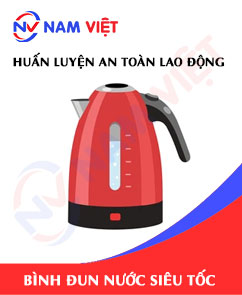
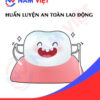
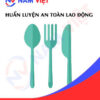




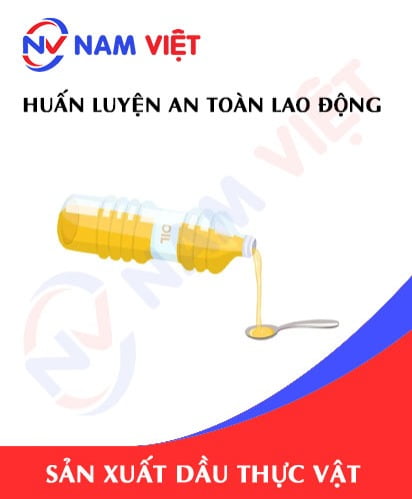




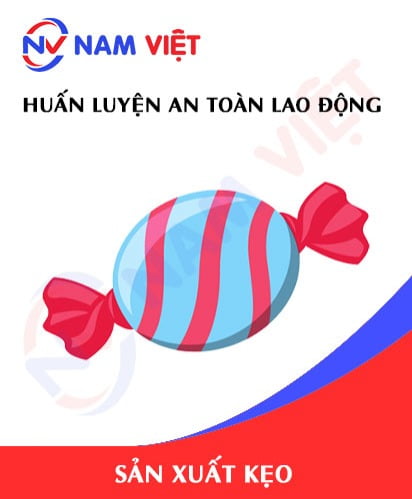

namchinh.haiphong341
Hay, cảm ơn trung tâm